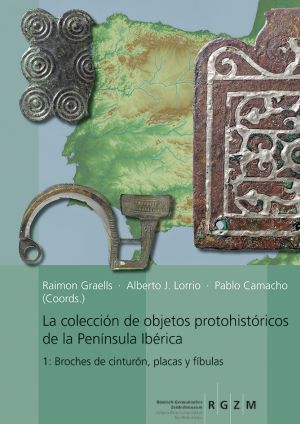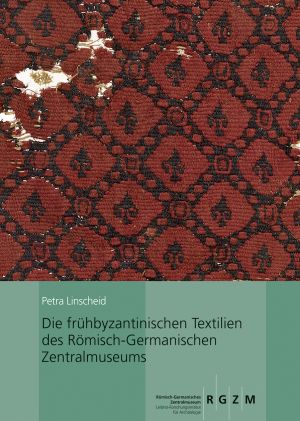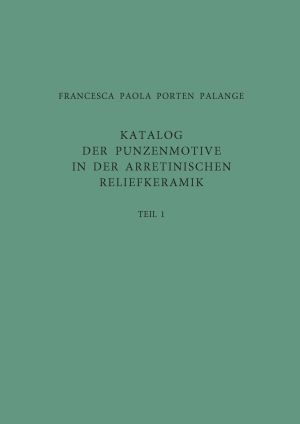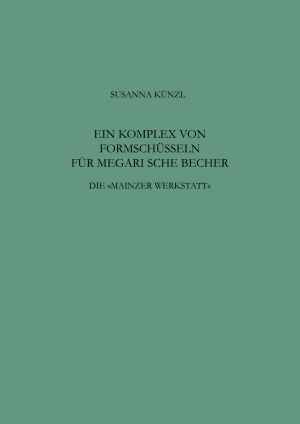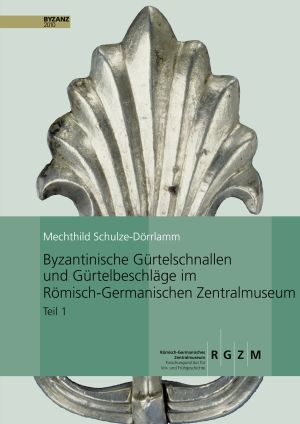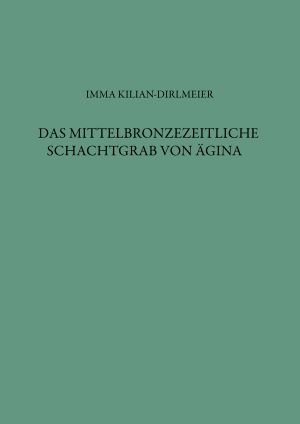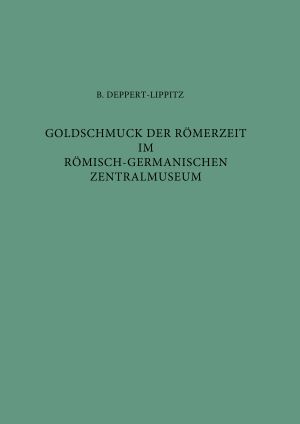Kataloge Vor- und Frühgeschichtlicher Altertümer
The “Kataloge Vor- und Frühgeschichtlicher Altertümer” were published from 1909 to 2021 with a total of 50 volumes. The Römisch-Germanisches Zentralmuseum has thus presented fundamental overviews of material on specific regional or temporally limited epochs of prehistory and early history.
The archaeological collection of the RGZM is unique in its compilation and at the same time a direct reflection of the museum's research. When the RGZM was founded in 1852, it was already a declared goal to establish a central reference collection in Mainz of the most important and significant archaeological finds between the Mediterranean region and northern Europe. This formed the basis for large-scale and cross-cultural studies that would hardly have been possible elsewhere at that time. Since the original objects were naturally to remain with their respective owners, detailed copies were made in Mainz. With the use of various methods, recently also digital ones, the production of copies still takes place today at the very highest level. It was not until the end of the 19th century that original objects increasingly entered the collection of the RGZM through donations, purchase or exchange. Today, the collection comprises about 200,000 individual objects, with copies and originals in balance.
In this publication series, numerous groups of objects, especially from the stock of originals, have been published or are components of still ongoing research projects.
In digital form, the entire archaeological collection of the RGZM can already be viewed using an online version of the analogue inventory books.
Some of these volumes are now out of print. The print media still available can be ordered at verlag@rgzm.de.
Preceding series
Kataloge des Römisch-Germanischen Zentralmuseums (Under construction)
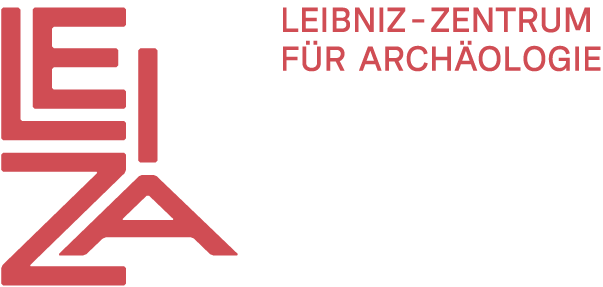
Press
Leibniz-Zentrum für Archäologie
Ludwig-Lindenschmit-Forum 1
D-55116 Mainz
Tel.: +49 6131 8885 0
E-mail: verlag@rgzm.de
Published so far
Die spätantiken Gürtel mit kerbschnittverzierten Metallbeschlägen: Studien zu Militärgürteln des 4.-5. Jahrhunderts
Notched belt fittings served as representative and symbolic late Roman military belts; they were specially designed in Gaul for elite troops of the field army, remained in modified form until the first third of the 5th century and can be found above all at military sites and along the imperial border. Due to troop movements and the mobility of army units, the "notched belts" spread to many regions of the Western Roman Empire. Veterans brought them back to their respective home towns. Thanks to their planned design and controlled change, notched belts provide information about the structure and effectiveness of the Late Antique army up to the middle of the 5th century.
La colección de objetos protohistóricos de la Península Ibérica. 2: Armas y elementos para el gobierno del caballo
The collection of materials from the Iberian Peninsula held in the RGZM consists of ca. 150 objects, divided into two groups with particular characteristics and problems: the clothing ornaments (published in 2018 in the first volume of this catalogue, Kat. 49, 1) and the weapons, which we are concerned with here.
The second volume presents the arms and horse harnesses, an exhaustive analysis of the ensembles with which they were associated and, not least, the many ensembles and weaponry that throughout the 20th century were offered to the museum for acquisition but did not make it into its collection.
We have replicated part of the methodology applied in the first volume, which consisted of studying the materials by categories and types, enriching the study with 3D recreations in order to improve the clarity of the exposition and make the discussion of the complex elaborations more comprehensible. One difference with respect to the ornamentation dossier is that many of the weapons are recorded as part of assemblages, probably funerary. This information has not been underestimated, but it has not guided the initial approach of the study. We have been concerned to carry out an intensive study and comparison of each piece individually. Once this has been done, in a final chapter, we have assessed the coherence of each of the proposed sets. In this way, we have given a further twist to the aim of combining research and teaching with a concern for the recovery of heritage and knowledge of the rhythms and impact of the antiquarian trade.
The project to study the Hispanic collection of the RGZM, begun in Mainz in 2012 on the initiative of the institution’s management, now ends ten years later with the publication of all the metal objects and further consolidates, if possible, the interest and international dimension of this type of project. In short, a full stop to the research collaboration between the RGZM and the University of Alicante.
Volume 1, see here.
La colección de objetos protohistóricos de la Península Ibérica: 1: Broches de cinturón, placas y fíbulas
The collection of materials from the Iberian Peninsula held at the RGZM consists of around 200 objects, divided into two groups with particular characteristics and problems: clothing ornaments and weapons.
This first volume presents objects related to clothing and/or personal adornment that correspond to the first acquisitions of Hispanic pieces made by the RGZM at the beginning of the 20th century.
The materials are necessarily divided by categories and types, as in a traditional catalogue, but the concern for methodological changes and the renewal of explanatory paradigms in the study of Hispanic protohistory has forced the authors to take certain precautions that make this catalogue an experiment. The aim has been to compensate for the lack of contexts with an intensive study and discussion of the parallels of each piece, turning each chapter into brief monographic studies. This approach makes it possible to characterise the area of origin and chronology of each specimen in the collection. It is a demanding work that attempts to go beyond the main function of the catalogue (that of compiling pieces from the antiquities market) and enters into the arduous work of scientific and patrimonial recovery, presenting the data for discussion.
This project to study the Iberian collection of the RGZM began in Mainz in 2012 on the initiative of the institution's management, as a contribution to the comprehensive study and dissemination of its archaeological collection. The success of the publication of this first part is the result of the coordination carried out by the authors (researchers from the RGZM and the University of Alicante) and the collaboration of specialists from different Spanish institutions.
Volume 2, see here.
Die frühbyzantinischen Textilien des Römisch-Germanischen Zentralmuseums
Textile finds from Egypt are our most important source for research into early Byzantine clothing and furnishing textiles. The Römisch-Germanisches Zentralmuseum owns over 200 mostly fragmentary, but also numerous complete textiles from this period.
They are presented here as a scholarly catalogue of the collection with detailed introductory chapters and a detailed catalogue section. Particular attention is paid to the production technique and the function of the pieces. The knowledge of the appearance and use of the various tunics, cloaks, head coverings as well as blankets, upholstery fabrics, hangings and textile utensils make these objects archaeologically and historically relevant testimonies beyond textile studies.
Die Kraft der Tiere: Völkerwanderungszeitliche Goldhalskragen und die Grundsätze germanischer Kunst
Tiny golden animal figures, mixed creatures, human and divine figures: Around 450 AD, a sophisticated pictorial language circulated in northern Europe. Deciphering this code allows deep insights into a past that is often mysterious.
As exquisite pieces of jewellery of the highest quality, the three Swedish gold neck collars are technically and iconographically the top products of their time. Although they were found as early as the 19th century and have fascinated researchers and laymen alike ever since, this is the first major scholarly monograph with outstanding illustrative material on these "imperial jewels". The focus is on questions concerning their manufacture, their bearers and their purpose. Above all, however, the significance of the many hundreds of figurative miniatures is explained, thus opening up access to the imaginary worlds of the Germanic peoples in pre-Christian times.
Cascos hispano-calcídicos: Símbolo de las elites guerreras celtibéricas
The Hispano- Chalcidian helmet is a fully Hispanic type, datable to between the 4th and 2nd century BC and with a mainly Celtiberian concentration. However, this type has recently been identified following the looting and sale of a number of specimens, probably from Aranda de Moncayo. The name is explained by its shape, which is reminiscent of Chalcidian helmets and their Italic derivatives, but which takes important morpho-technological details from local Celtiberian production.
Although there is considerable variability among the 32 specimens identified so far, we can consider this to be the result of individualized production. But apart from these variations, the Hispano- Chalcidian group has an easily recognizable predetermined design: a shell with openings for the ears, long muzzle-guard, articulated cheeks (the rim of these pieces is reinforced by riveting a pseudo-hemispherical ribbon), the attachment of ribbons on the front and the systematic application of a complex decorative structure formed by feathers inserted in lateral appliqués and by the vertical lophos, supported between the fork of the cylindrical appendage which is documented to be fixed by three rivets on the upper part of the shell and the rings on the front and dorsal part of the shell.
The study presented here analyses the morphological and decorative characteristics in order to approach their production and the meaning of the weapons themselves: protective elements and, at the same time, vehicles with which to express different messages of power, military rank or influences acquired during the course of mercenary activity in southern Italy.
Byzantinische Goldschmiedearbeiten im Römisch-Germanischen Zentralmuseum
The Römisch-Germanisches Zentralmuseum in Mainz owns a collection of Byzantine goldsmith's work, only a small part of which has been published so far and is therefore widely unknown. Since this collection of jewellery and insignia of rank contains not only individual finds but also remarkable ensembles and, in addition, some copies of valuable, unfortunately destroyed originals, it is now being made accessible to the general public for the first time. The objects are listed in 49 catalogue numbers. They come predominantly from the core areas of the Byzantine Empire, but also occasionally from regions beyond its borders and, moreover, from a long period of time stretching from the late 5th to the 14th/15th century.
Particularly noteworthy are two treasure finds, among them even a coin-dated one from Asia Minor or the Syro-Palestinian region, several necklaces made of elaborately openwork gold medallions, a gold bracelet ring from Syria also decorated with the finest opus interrasile and moreover with the most valuable precious stones, the only surviving decorative strip of a woman's crown cap, the richly chiselled pocket lid of a man of presumably royal rank, and an ensemble of Roman glass vessels, probably made in Constantinople in the 8th/9th century. They could be antiques from the imperial palace there.
In addition to a short catalogue with concise information on each object in the collection, the book contains an antiquarian appreciation of these goldsmith's works and the numismatic treatment of the coin-dated treasure find. In addition, one finds a detailed description of all applied goldsmithing techniques, which two experienced goldsmiths and restorers examined in the RGZM workshops. Overall, the catalogue is much more richly illustrated than comparable publications with new master photos of all the precious objects and countless detailed photos as well as drawings.
Die bronze- und früheisenzeitlichen Troiafunde der SammlungHeinrich-Schliemann im Römisch-Germanischen Zentralmuseum
The scope of this volume is the comprehensive publication of so-called doublets, for example twin pieces of ceramics and small finds from the holdings of the Berlin museums, which were given to 35 European museums and research institutes in the course of the final inventory in the years 1895-1900 in order to structure the core collection in Berlin better and make it more manageable. The Mainz Troy Collection consists of partly fragmented pottery, partly restored in the workshops of the research institute, from the settlement phases Troy I to VIIb2, i.e., the strata of the early Bronze to early Iron Age according to Anatolian terminology. The inventory of small finds includes objects made of clay, stone, and shell limestone.
"The Bronze Age and Early Iron Age Troy Finds of the Heinrich Schliemann Collection in the Roman-Germanic Central Museum" is thus a contemporary contribution to the reappraisal of the enormous archaeological legacy of Heinrich Schliemann, which has so far only been critically appreciated in rudimentary form.
Spangenhelme: Baldenheim und verwandte Typen
The small group of early medieval helmets has been the subject of lively interest in archaeological research for decades. Especially the partially gilded and richly decorated Spangenhelme (segmented helmets) of the Baldenheim type have been discussed again and again, as they were mostly found north of the Alps in richly equipped warrior graves of the 5th and 6th centuries.
Katalog der Punzenmotive in der arretinischen Reliefkeramik: Teil 1
The catalogue provides a comprehensive overview of the hallmark motifs of the relief pottery produced in Arezzo and the surrounding area from around 30 BCE.
Ad volume 2
Katalog der Punzenmotive in der arretinischen Reliefkeramik: Teil 2
The catalogue provides a comprehensive overview of the hallmark motifs of the relief pottery produced in Arezzo and the surrounding area from around 30 BCE.
Ad volume 1
Ein Komplex von Formschüsseln für Megarische Becher: Die »Mainzer Werkstatt«
The "Mainz Workshop" is the name given to a group of 114 casting moulds or fragments for the production of Hellenistic bowls with reliefs, which came into various collections at the end of the 1960s/beginning of the 1970s. The largest part, 76 pieces, is in the collection of the Römisch-Germanisches Zentralmuseum and is presented here. The vessels were probably produced at the end of the 2nd/beginning of the 1st century BC in Western Asia Minor.
Byzantinische Gürtelschnallen und Gürtelbeschläge im Römisch-Germanischen Zentralmuseum: Die Schnallen ohne Beschläg, mit Laschenbeschläg und mit festem Beschläg des 5. bis 7. Jahrhunderts
The Römisch-Germanisches Zentralmuseum has one of the world's largest collections of Byzantine belt buckles, most of which come from the centre of the Byzantine Empire. Even as individual pieces without a find context, they provide important insights into the form and decoration of this piece of clothing, which was mainly worn by men - especially soldiers - on their waistbands. As insignia, they still allow us to infer the rank or social status of their wearer and to guess at their spiritual imagination.
Part 1 of the catalogue, first published in 2002 and slightly corrected in this new edition, presents 224 typical belt buckles from the 5th to 7th centuries in their variety of forms and former distribution. In addition, the chronological table at the end of the volume makes it easier to quickly identify and date new finds. The reader will also find a guide to distinguishing typical Byzantine belt buckles from contemporary variants made in workshops in the Empire's neighbouring countries.
The second edition is a revised and updated version, with 33 new pieces.
Ad Volume 2
Byzantinische Gürtelschnallen und Gürtelbeschläge im Römisch-Germanischen Zentralmuseum: Die Schnallen ohne Beschläg, mit Laschenbeschläg und mit festem Beschläg des 5. bis 7. Jahrhunderts
The Römisch-Germanisches Zentralmuseum in Mainz currently owns 363 Byzantine belt buckles and fittings dating from the 7th to the early 11th century. Most of them come from the centre of the Byzantine Empire, where there are few cemeteries with grave goods and therefore few finds. These buckles therefore fill a major gap in our knowledge of this type of clothing accessory, even though they are all single pieces without any context.
Part 2 of the catalogue also shows the characteristics, dates and distribution areas of the various buckle types, and a chronological table makes it easier for the reader to date new finds. The analysis considers issues such as the history of craftsmanship, trade and costume, as well as the search for former owners. These were mainly men who used buckles not only to fasten their waist belts but also as a sign of rank, recognisable by the metal and decoration. For the first time, there is also evidence that women began to wear belt buckles in a gender-specific manner in the 9th century at the latest.
In a separate article, the conservator M. Fecht describes the results of her research into the manufacturing technique and the - mostly lost - colouring of Byzantine belt buckles from the 8th century.
As a supplement to Part 1, a catalogue of 33 subsequently acquired finds has also been included in this volume.
Ad Volume 1
Das mittelbronzezeitliche Schachtgrab von Ägina
The island of Aegina in the center of the Saronic Golf payed for a long time a significant role in the exchange network of the Aegean. The shaft grave came to light in 1982 during sytematic excavations in the fortified settlement on Cape Kolonna. The rich furniture, the tomb’s architecture and the topographcal location give evidence for the importance of the settlement in Middle Bronze II. Comparable elite burials are known from the Greek mainland and the islands. The analysis of the mortuary practices open new views on social structures, economic exchange and the establishment of a ruling class.
Goldschmuck der Römerzeit im Römisch Germanischen Zentralmuseum
This catalogue presents the RGZM's collection of Roman gold jewellery. A general introduction describes the development of Roman jewellery from the 1st to the early 3rd century A.D. Production techniques and the social position of goldsmiths are discussed. Finally, the catalogue presents the objects in the collection, divided into the following groups: neck jewellery, arm jewellery, jewellery of uncertain provenance and fragments, earrings and ear pendants, finger rings and modern jewellery with ancient gems.





